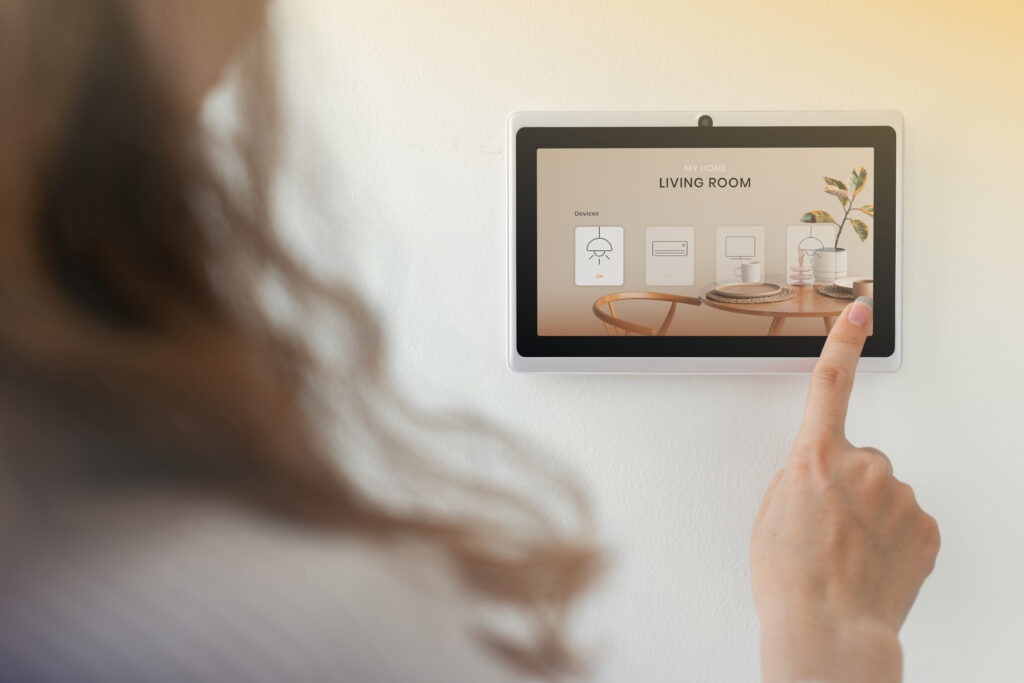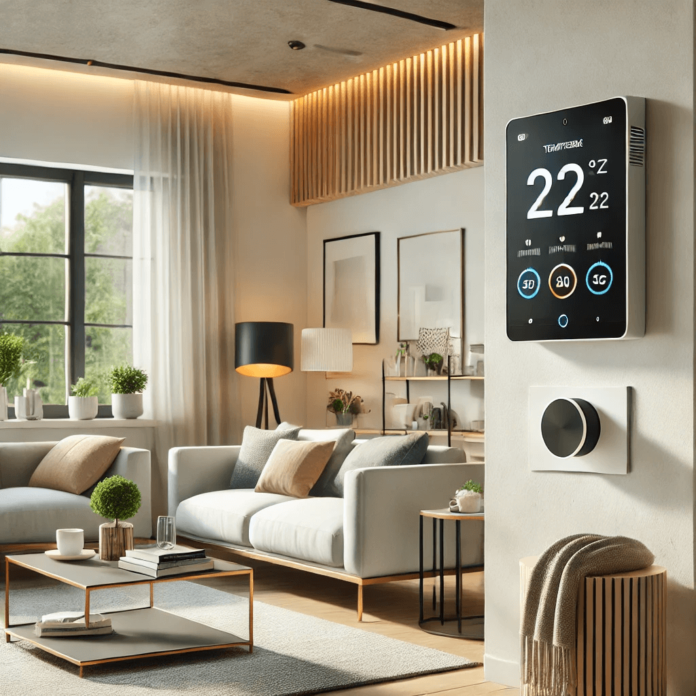Introduction
Looking for better control of your heating and cooling system? Smart thermostats offer advanced HVAC control with smart thermostats that optimize energy efficiency and comfort. Whether you’re searching for the best smart thermostat for HVAC or exploring smart home HVAC solutions, these devices allow you to monitor and adjust temperatures remotely through smartphone apps. With features like learning schedules and voice command integration, smart thermostats help reduce energy costs and maintain a comfortable environment year-round. Here’s how they can revolutionize your home’s heating and cooling system.
Smart Thermostats: Revolutionizing Home Temperature Control

Smart thermostats are transforming how homeowners manage their HVAC systems, offering convenient and energy-efficient solutions. These advanced devices learn your daily schedule, automatically adjusting temperatures to reduce energy consumption without sacrificing comfort.
The Evolution of HVAC Control: From Manual to Intelligent Systems
Traditional thermostats require manual adjustments, often leading to energy waste and inconsistent comfort. The rise of programmable thermostats in the 1980s introduced scheduling capabilities, but true innovation arrived with smart thermostats in the 2000s. These devices leverage AI, IoT, and machine learning to automate climate control while adapting to user behavior.
Key Milestones:
- 2007: Ecobee launched the first smart thermostat, introducing remote access and energy tracking.
- 2010s: Nest Learning Thermostat popularized self-programming based on user routines.
- 2025: Advanced models integrate air quality monitoring, geofencing, and renewable energy compatibility.
Key Features Driving the Smart Thermostat Revolution
1. AI-Powered Learning Algorithms
Smart thermostats analyze user habits—such as wake-up times, work schedules, and sleep preferences—to create personalized heating/cooling schedules. For example, the Nest Learning Thermostat adjusts temperatures automatically after a week of observation, reducing energy use by 8–12% annually.
2. Remote Control and Geofencing
Wi-Fi connectivity allows users to adjust settings via smartphone apps from anywhere. Geofencing uses GPS to detect when occupants leave or approach home, triggering temperature adjustments to save energy.
3. Integration with Smart Home Ecosystems
Modern thermostats sync with voice assistants (Alexa, Google Assistant), lighting systems, and security devices. For instance, a thermostat can lower the heat when smart locks detect no one is home, or raise it when motion sensors trigger morning routines.
4. Energy Usage Insights and Reports
Devices like the Amazon Smart Thermostat provide detailed breakdowns of HVAC consumption, highlighting peak usage times and suggesting optimizations. Users save an average of
50–145 yearly, with ROI often within two years.
5. Indoor Air Quality (IAQ) Monitoring
2025 models, such as the Ecobee SmartThermostat Premium, include sensors for CO2, VOCs, and humidity. They automatically activate ventilation or purification systems to maintain healthy air, addressing post-pandemic concerns about respiratory health.
Top Smart Thermostats of 2025: A Comparative Overview
| Model | Key Features | Pros | Cons |
| Nest Learning Thermostat (4th Gen) | AI scheduling, Google Home integration, room sensors | Sleek design, self-programming, energy reports | High upfront cost ($249), limited Apple HomeKit support |
| Ecobee SmartThermostat Premium | Built-in Alexa, IAQ monitoring, room sensors | Zonal temperature control, Bluetooth speaker | Requires additional sensors for full functionality |
| Honeywell Home T9 | Geofencing, smart room sensors | Affordable, easy installation | The outdated interface lacks advanced AI |
| Amazon Smart Thermostat | Alexa integration, Energy Star-certified | Budget-friendly ($80), intuitive app | Limited smart home compatibility |
| Honeywell Evohome | Underfloor heating support, zonal control | Granular room-by-room adjustments | Expensive, bulky design |
Benefits Beyond Temperature Control
1. Energy Efficiency and Cost Savings
Smart thermostats reduce HVAC runtime by 10–15% through adaptive scheduling and occupancy detection. The Nest Learning Thermostat cuts heating/cooling costs by up to 12%, while geothermal-integrated systems (e.g., Ruud Econet 800) achieve 40% energy savings.
2. Enhanced Comfort Through Zoning
Zoned systems, like those enabled by Honeywell Evohome, allow independent temperature settings for different rooms. This eliminates hot/cold spots and tailors comfort to individual preferences.
3. Environmental Sustainability
By optimizing energy use and supporting renewable sources (e.g., solar-powered HVAC), smart thermostats reduce carbon footprints. The shift to low-GWP refrigerants like R-32 further aligns with global decarbonization goals.
4. Predictive Maintenance and Longevity
AI algorithms in devices like the Google Nest detect issues like refrigerant leaks or motor wear early, preventing costly breakdowns. This extends the HVAC lifespan by 5–10 years.
Challenges and Considerations
1. Installation and Compatibility
- C-Wire Requirement: Many smart thermostats need a common wire for power, though Nest models can operate without one.
- HVAC System Compatibility: Older systems may require retrofitting. The Sensibo Sky specializes in ductless AC units, while Mysa supports baseboard heaters.
2. Privacy and Data Security
IoT connectivity raises concerns about data breaches. Brands like Ecobee and Honeywell now offer encrypted communication and local data storage options.
3. Upfront Costs vs. Long-Term Savings
While premium models cost
200–300, incentives like ENERGY STAR rebates and utility discounts offset initial investments. The Amazon Smart Thermostat exemplifies budget-friendly efficiency at $80.
The Future of Smart Thermostats: Emerging Trends
1. Matter Compatibility
The Matter protocol ensures cross-platform interoperability, allowing devices like the Nest Thermostat to work seamlessly with Apple HomeKit, Alexa, and Google Home ecosystems.
2. Renewable Energy Integration
Future models will sync with solar panels and geothermal systems, dynamically adjusting the HVAC load based on renewable energy availability.
3. Advanced AI and Predictive Analytics
Next-gen thermostats will use weather forecasts and occupancy patterns to pre-cool or pre-heat homes. The Resideo Honeywell T10+ already connects to 20 wireless sensors for hyper-localized control.
4. Health-Centric Features
Post-2025 devices may include pathogen-detecting sensors and automated UV-C sterilization, building on current IAQ monitoring capabilities.
Conclusion:
Smart thermostats are no longer mere gadgets—they are central to a sustainable, efficient, and comfortable future. By merging AI, IoT, and renewable energy, these devices reduce energy bills, enhance indoor health, and combat climate change. As technology evolves, expect smarter integrations, broader compatibility, and deeper customization.
Key Takeaways:
- Prioritize thermostats with AI learning and geofencing for maximum savings.
- Pair with zoning systems and renewable energy for holistic efficiency.
- Leverage tax credits and rebates to offset upfront costs.
For homeowners and businesses alike, upgrading to a smart thermostat isn’t just a choice—it’s a step toward a cleaner, more responsive world. Explore models like the Ecobee SmartThermostat Premium or Nest Learning Thermostat to begin your journey














